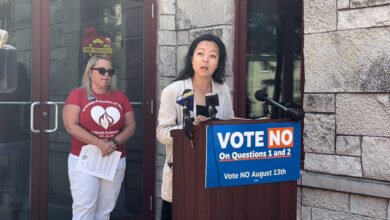Publishes final environmental impact statement for proposed Enbridge Line 5 relocation – WisPolitics

MADISON, Wis. – The Wisconsin Department of Natural Resources (DNR) today published its final Environmental Impact Statement for Enbridge, Inc.’s proposal to replace a segment of its Line 5 liquid petroleum pipeline in Ashland and Iron counties.
Operational since 1953, Line 5 is part of an extensive network of petroleum transport pipelines owned and operated by Enbridge Energy, LLC. The existing line runs for 645 miles from Superior, Wisconsin, to Sarnia, Ontario, including a 12-mile segment that passes through the Bad River Reservation of the Bad River Band of Lake Superior Chippewa.
Enbridge is proposing to replace 20 miles of existing pipeline, including the 12-mile segment within the reservation, with 41 miles of new pipeline routed entirely outside the reservation’s border.
Wisconsin law requires all state agencies to prepare a detailed statement, called an environmental impact statement, or EIS, for major actions that significantly affect the quality of the human environment. An EIS is an objective, detailed and comprehensive analysis of the anticipated environmental and socio-economic impacts of a proposed project and its alternatives.
Per s. NR 150.30(1), Wis. Admin. Code, the purpose of an EIS is to inform decision-makers and the public of the anticipated effects on the quality of the human environment of a proposed action or project and alternatives to the proposed action or project. An EIS shall consider the proposed action or project, alternatives and anticipated environmental effects in a dispassionate manner, and may not advocate a particular position about a proposed action or project.
Enbridge has applied for multiple DNR permits. The DNR is reviewing Enbridge’s permit application materials and will give due consideration to the EIS as part of the process of making final decisions to approve, deny or condition the permits and approvals under application.
Enbridge will also need to secure permits and approvals from the U.S. Army Corps of Engineers and Bad River Band of Lake Superior Chippewa before they can proceed with the proposed project.
For a list of frequently asked questions and answers, visit this DNR webpage.
For a general overview of the project, visit this DNR webpage.
Source link




